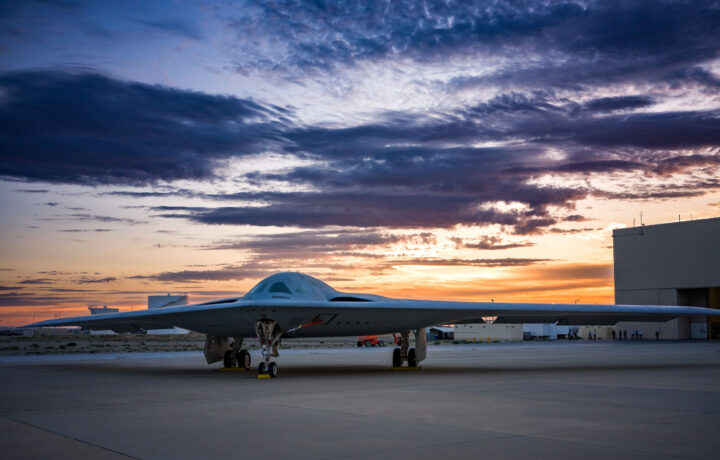Despite receiving hundreds of new aircraft in recent years, including Lockheed Martin F-35 Lightning II Joint Strike Fighters and Boeing KC-46A Pegasus tankers, the Air Force still has an aging fleet problem. Many of its platforms were built decades ago and are wearing out or becoming obsolete.
“It’s no secret that the Air Force today is the oldest and smallest in its history,” said retired Air Force Lt. Gen. David Deptula, dean of the Air & Space Forces Association’s (AFA) Mitchell Institute for Aerospace Studies.
Northrop Grumman and the B-21
However, the service’s aviation modernization efforts took several steps forward as AFA held its annual Air, Space & Cyber Conference in National Harbor, MD, near Washington, D.C., from September 11 to 13. Northrop Grumman, the prime contractor for the B-21 Raider bomber, announced that the stealthy plane has begun engine runs during ground testing at the company’s plant in Palmdale, CA. The milestone keeps the B-21 on track for its first flight this calendar year.
“We’re really excited about the B-21 Raider program,” Gen. Thomas Bussiere, commander of Air Force Global Strike Command, said at the AFA conference. The program is “going very well” and will deliver an “exquisite” capability.
The Air Force plans to buy at least 100 B-21s to replace its B-1B Lancer and B-2 Spirit bombers, both of which first flew in the 1980s. Although Northrop Grumman has been developing the B-21 mostly in secrecy for almost eight years, it publicly unveiled the first aircraft at a glitzy ceremony in Palmdale in December 2022.
BAE Systems and L3Harris Aircraft
Air Force aviation received another boost when BAE Systems and L3Harris announced that they have delivered the first of 10 EC-37B Compass Call electronic warfare aircraft to the service for combined developmental and operational testing. The EC-37B, a modified Gulfstream G550 business jet, will replace the Air Force’s 40-year-old EC-130H Compass Call fleet.
The EC-37B is designed to disrupt an enemy’s communications, radars, and navigation systems. It will also suppress enemy air defenses by preventing an adversary from sharing essential information with weapon systems and command-and-control networks.
Boeing-Saab aircraft
On yet another aviation front, Air Force officials reportedly indicated at the AFA conference that they were preparing to take delivery of the first T-7A Red Hawk training jet. The Boeing-Saab aircraft has been in development since 2018 and took its first flight in June 2023. The Air Force intends to buy 351 T-7As to replace the T-38 Talon, which first flew in 1959 and is used to prepare pilots to fly fighters and bombers.
Whether these new aircraft programs stay on track will help determine whether the Air Force can field a more modern fleet in the coming years.
NOT JUST AIRCRAFT
Non-aviation news also emerged during the AFA conference. Chief of Space Operations Gen. Chance Saltzman revealed that the Space Force plans to stand up an organization in December to promote cooperation with US European Command and US Africa Command. The Space Force has formed similar entities, or “service components”, for three other regional commands in the past year. Those components are Space Forces Central Command, Space Forces Indo-Pacific, and Space Forces Korea.
Saltzman also highlighted the Space Force’s newly unveiled mission statement: “Secure our nation’s interests in, from and to space”. He praised the statement, saying, “It’s simple, it’s direct and it clearly reflects our purpose and identity as guardians.”
The Space Force was created within the Department of the Air Force almost four years ago amid growing threats in space. “The space domain is now more contested than at any point in our history,” Saltzman said at the conference.



